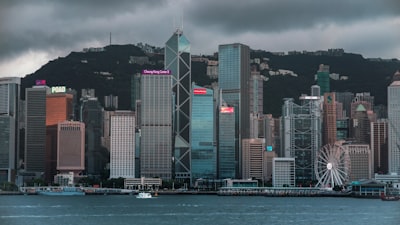Summary
At the South China Morning Post’s China Conference, Hong Kong’s Chief Executive John Lee Ka-chiu reaffirmed the city’s position as a crucial “superconnector” linking global markets with China’s economic vitality. Speaking to an audience of over 950 participants, Lee painted Hong Kong as a reliable hub amid global uncertainty, emphasizing its role as a bridge between the West and China, a source of investible stability, and a guarantee of security and development. He also referenced the visit of China’s first domestically produced aircraft carrier, Shandong, to Hong Kong, underscoring the city’s symbolic status as a harbor of trust and regional peace.
Analysis
Lee’s address is calibrated to reassure international investors and counteract growing anxiety about Hong Kong’s autonomy, stability, and future under Beijing’s rule. His choice of words—such as “superconnector,” “super value-adder,” and a link “you can always bank on”—is designed to evoke trust, resilience, and opportunity amidst turbulence. Yet, the backdrop to these reassurances is a world awash in protectionism, trade frictions, and mounting geopolitical competition, especially between China and the US.
The reference to the Shandong aircraft carrier, while couched in the language of peace, subtly signals China’s growing military confidence and the expectation that Hong Kong’s role is as much strategic as commercial. This framing glosses over ongoing concerns: the city’s diminishing civil liberties post-National Security Law, talent exodus, and challenges to maintaining the rule-of-law standards that once made it so attractive to foreign capital. There is little discussion here of internal pushbacks or the fading boundary between Hong Kong’s distinct system and the mainland’s deepening influence.
Discussion
Why does this topic matter? Hong Kong was long considered Asia’s premier global city, a place where East met West in open financial markets and vigorous civic debate. The current narrative—of resilience, security, a ‘safe harbor’—is both a pragmatic adaptation and a necessity, as global investors seek assurance amid volatile geopolitics. Yet, the city is also at risk of being recast as a front office for Chinese power rather than a unique, neutral ground.
This tension between ‘certainty’ (as Lee phrases it) and an underlying erosion of freedoms prompts questions: Can Hong Kong retain its appeal as an international bridge if it is perceived as just another Chinese city? Will global investors and innovators continue to see value in its distinctiveness, or will regulatory and political shifts drive capital and talent elsewhere—perhaps to Singapore or Dubai?
In the end, Hong Kong’s fate as a superconnector will be shaped not only by its official rhetoric, but by the lived reality of openness, rule of law, and autonomy. The world is watching, and so are those whose livelihoods and aspirations depend on whether Hong Kong truly remains a link worth trusting.

Comments
No comments yet. Be the first to comment!